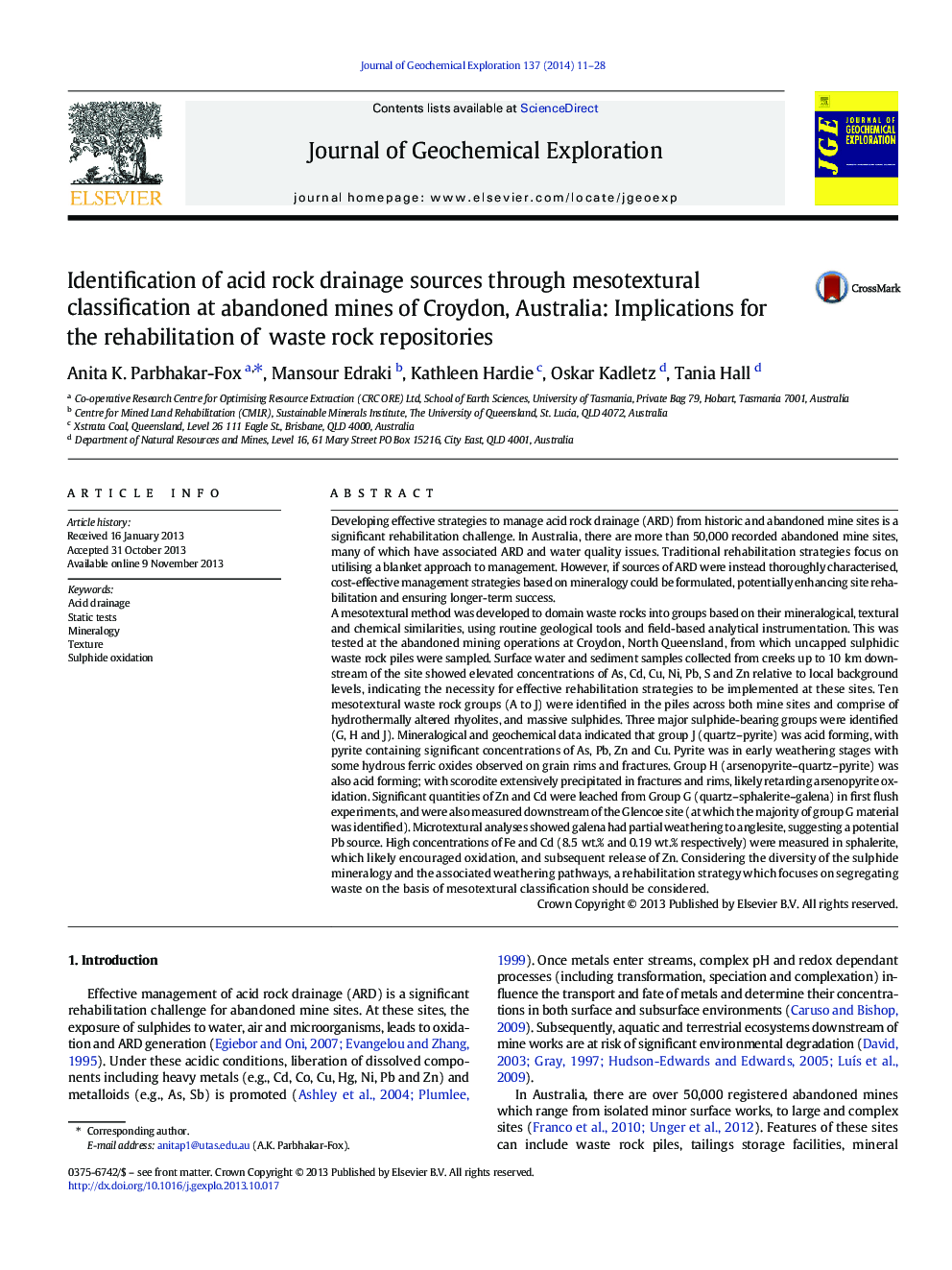| کد مقاله | کد نشریه | سال انتشار | مقاله انگلیسی | نسخه تمام متن |
|---|---|---|---|---|
| 4457434 | 1620920 | 2014 | 18 صفحه PDF | دانلود رایگان |
• Mine site rehabilitation can be improved by better characterisation of ARD sources.
• A mesotextural classification method based on mineralogy and texture is proposed.
• Ten mesotextural groups (A to J) were identified in Croydon waste rock samples.
• Sulphidic groups were mineralogically diverse, with differing chemical signatures.
• Future rehabilitation should consider segregation of sulphidic groups.
Developing effective strategies to manage acid rock drainage (ARD) from historic and abandoned mine sites is a significant rehabilitation challenge. In Australia, there are more than 50,000 recorded abandoned mine sites, many of which have associated ARD and water quality issues. Traditional rehabilitation strategies focus on utilising a blanket approach to management. However, if sources of ARD were instead thoroughly characterised, cost-effective management strategies based on mineralogy could be formulated, potentially enhancing site rehabilitation and ensuring longer-term success.A mesotextural method was developed to domain waste rocks into groups based on their mineralogical, textural and chemical similarities, using routine geological tools and field-based analytical instrumentation. This was tested at the abandoned mining operations at Croydon, North Queensland, from which uncapped sulphidic waste rock piles were sampled. Surface water and sediment samples collected from creeks up to 10 km downstream of the site showed elevated concentrations of As, Cd, Cu, Ni, Pb, S and Zn relative to local background levels, indicating the necessity for effective rehabilitation strategies to be implemented at these sites. Ten mesotextural waste rock groups (A to J) were identified in the piles across both mine sites and comprise of hydrothermally altered rhyolites, and massive sulphides. Three major sulphide-bearing groups were identified (G, H and J). Mineralogical and geochemical data indicated that group J (quartz–pyrite) was acid forming, with pyrite containing significant concentrations of As, Pb, Zn and Cu. Pyrite was in early weathering stages with some hydrous ferric oxides observed on grain rims and fractures. Group H (arsenopyrite–quartz–pyrite) was also acid forming; with scorodite extensively precipitated in fractures and rims, likely retarding arsenopyrite oxidation. Significant quantities of Zn and Cd were leached from Group G (quartz–sphalerite–galena) in first flush experiments, and were also measured downstream of the Glencoe site (at which the majority of group G material was identified). Microtextural analyses showed galena had partial weathering to anglesite, suggesting a potential Pb source. High concentrations of Fe and Cd (8.5 wt.% and 0.19 wt.% respectively) were measured in sphalerite, which likely encouraged oxidation, and subsequent release of Zn. Considering the diversity of the sulphide mineralogy and the associated weathering pathways, a rehabilitation strategy which focuses on segregating waste on the basis of mesotextural classification should be considered.
Journal: Journal of Geochemical Exploration - Volume 137, February 2014, Pages 11–28
